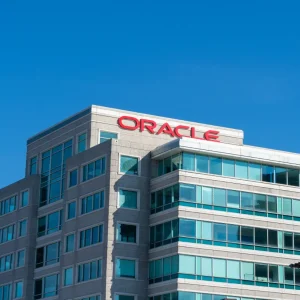
The booming public cloud market is showing signs of slowing down, with two of the hyperscaler cloud providers, Amazon’s AWS and Microsoft Azure, reporting slowing growth this week. Newly released figures show the value of the cloud market grew by $11bn in the last quarter, representing a significant year-on-year downturn in growth as the global economic situation impacts IT spending.

Amazon’s quarterly results, released yesterday, showed AWS revenue growth of 28%, to $20.5bn. This was down on the expected 31% growth and compares to 39% for the same period of last year. The uptick in income is the smallest AWS has posted since Amazon started breaking out its financial records in 2014.
Meanwhile, on Tuesday, Microsoft said revenue from its intelligent cloud division, which includes Azure and its server products, was $20.3bn, up 26%. This is compared to 31% growth in 2021.
Is public cloud spending slowing down?
The lower-than-expected cloud revenue growth hit the share price of both Amazon and Microsoft following the results announcements. The third member of the hyperscaler trio which dominate the public cloud market – Google Cloud – fared somewhat better, beating expectations with revenue growth of 38%, to $6.9bn. This is still off last year, where it enjoyed 45% growth.
New data from Synergy Research Group shows that the overall public cloud market grew by $11bn, or 24%, in the last quarter. This compares to 37% last year, as well as 34% and 29% in the first two quarters of 2022.
Difficult economic conditions around the world could account for this dip in spending growth, with businesses having to deal with rising inflation and the impact of the war in Ukraine on energy prices and supply chains. Increasingly severe sanctions imposed by the US on China could also be affecting spending decisions, while the Eurozone has been highlighted as a particularly difficult market at present.
“We really first started to see (a slowdown) in April and it’s continued,” Matt Wegner, a research specialist at YipIt Data, told Reuters. “The European region is a source of weakness.”
Hyperscaler market dominance builds
While the market is slowing down, its overall size and the continued spending growth mean that nobody should be shedding too many tears for the hyperscalers. Indeed, Synergy Research Group’s data shows that they have tightened their grip on the sector in the last year. AWS, Azure and Google Cloud now account for 66% of the market, compared to 61% in Q3 2021.
“It is a strong testament to the benefits of cloud computing that despite two major obstacles to growth the worldwide market still expanded by 24% from last year,” said John Dinsdale, a chief analyst at Synergy Research Group.
He points out that currency exchange rates have had a significant bearing on overall market growth. “Had exchange rates remained stable and had the Chinese market remained on a more normal path then the growth rate percentage would have been well into the thirties,” he said. “The three leading cloud providers all report their financials in US dollars so their growth rates are all beaten down by the historic strength of their home currency.”
Despite this, Dinsdale said, all three providers “have increased their share of a rapidly growing market over the last year, which is a strong testament to their strategies and performance.” He added: "Beyond these three, all other cloud providers in aggregate have been losing around three percentage points of market share per year but are still seeing strong double-digit revenue growth. The key for these companies is to focus on specific portions of the market where they can outperform the big three.”






